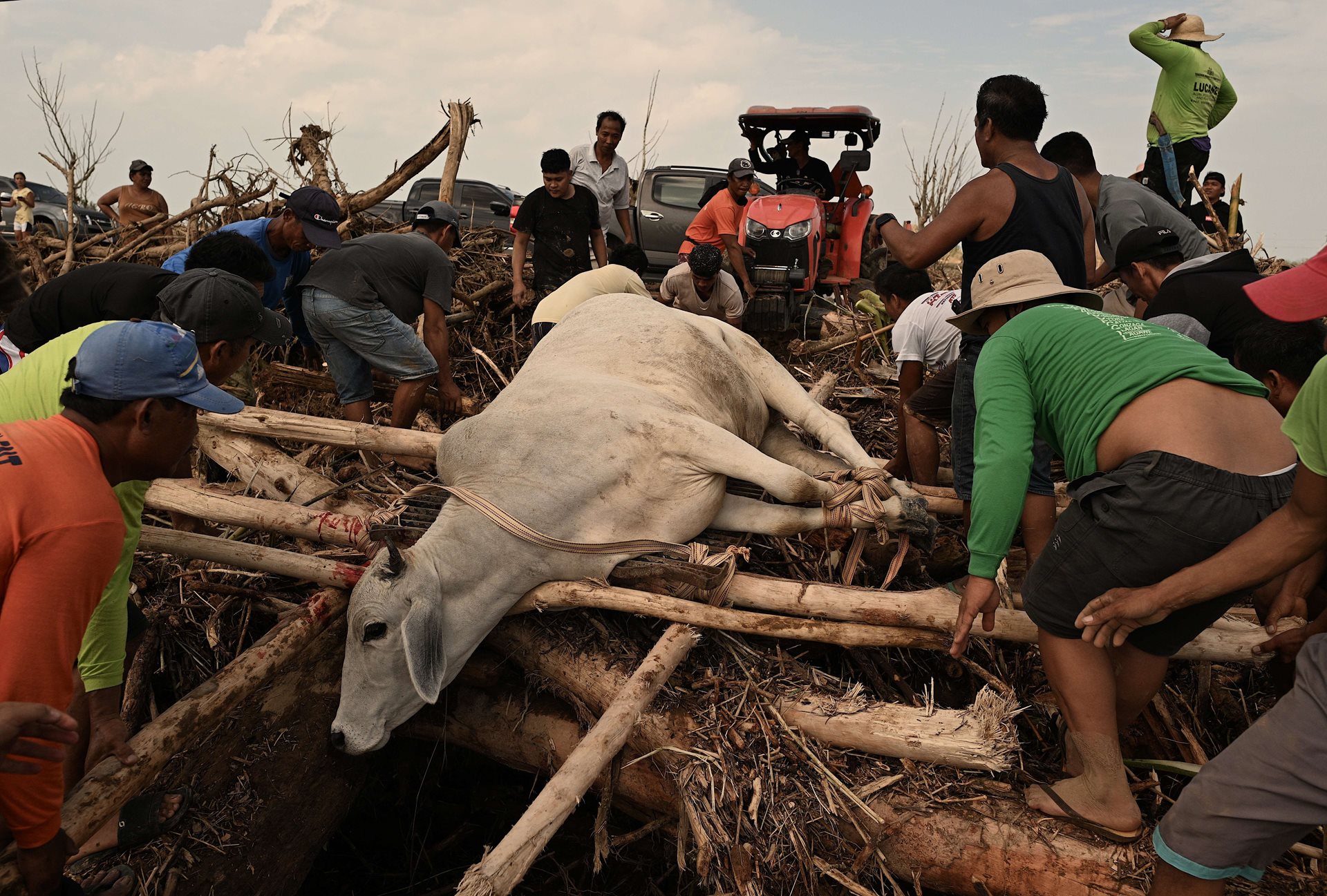People rescue a cow trapped by debris in flood waters caused by Typhoon Usagi, in Gonzaga, Cagayan, northern Philippines. The typhoon destroyed infrastructure and led to extensive agricultural losses.
Four consecutive cyclones, three of which developed into typhoons, hit the Philippines in a matter of days in late October and early November 2024. Tropical Storm Trami was followed by Typhoons Yinxing (known locally as Marce), Toraji (known as Nika), and Usagi (known as Ofel). The successive storms left at least 160 people dead, displaced millions, and devastated farmland, homes, and infrastructure, mostly in the northern Luzon region. Flooded roads and closed ports made relief efforts difficult, and the government sought the help of neighboring countries in providing additional aircraft to transport food, water and other aid to villages isolated by the storms.
The Philippines is battered by around 20 typhoons and tropical storms each year, and storms are becoming more frequent and more extreme. A Philippine Climate Change Assessment Cycle report points to a 210% increase in typhoons hitting the Philippines since 2012, and scientists contributing to an Intergovernmental Panel on Climate Change (IPCC) assessment report a steep increase in cyclone-induced rainfall.
Other studies indicate that the climate crisis is intensifying extreme rainfall and flooding worldwide. In 2024, record-breaking rainfall and flash floods hit Spain, and devastating floods occurred in southern China, Brazil, and across Central Europe.
Are you a photographer and/or passionate about press freedom? Sign up for our newsletter to stay updated on our annual contest and to hear about exhibitions near you.

